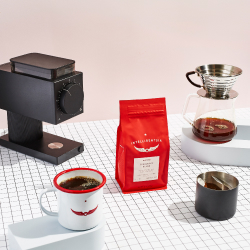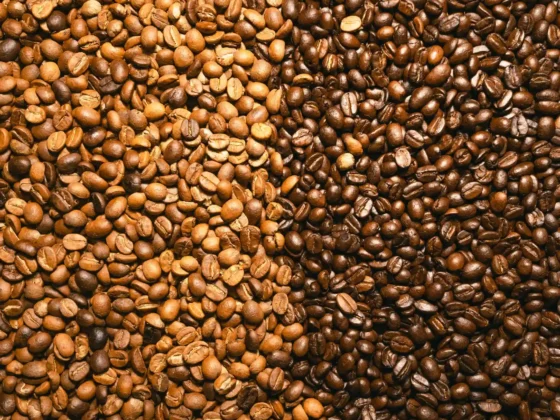In the ever-evolving world of coffee, numerous variations cater to the diverse tastes of coffee lovers. One such variation that has garnered attention and appreciation is the dry cappuccino. But what is a dry cappuccino? This article delves into the intricate details of this unique coffee variant, exploring its preparation, flavor profiles, and the creative ways it can be customized and presented. Whether you are a seasoned barista or a curious coffee enthusiast, understanding the nuances of this delicacy can elevate your admiration for its refined characteristics. Let’s embark on a journey to explore the artistry and flavor that define this concoction.
If reading isn’t your thing right now, give the article a listen by clicking below.
- Introduction & Key Takeaway
- https://app.mysoundwise.com/tracks/17007631170206799e.mp3
- What is Dry Cappuccino?
- https://app.mysoundwise.com/tracks/17007631468203188e.mp3
- The Art of Froth
- https://app.mysoundwise.com/tracks/17007631738539868e.mp3
- Creating a Dry Cappuccino
- https://app.mysoundwise.com/tracks/17007632052145952e.mp3
- Dry Cappuccino vs. Traditional Cappuccino
- https://app.mysoundwise.com/tracks/17007632358303555e.mp3
- Exploring Dry Cappuccino Variations
- https://app.mysoundwise.com/tracks/17007632690727048e.mp3
- Conclusion & FAQs
- https://app.mysoundwise.com/tracks/17007632977876208e.mp3
Dry Cappuccino: Key Takeaway
- Understanding Dry Cappuccino: A dry cappuccino is characterized by a higher ratio of froth to milk compared to traditional cappuccinos, resulting in a stronger espresso flavor and a lighter, airier texture.
- Flavor Enhancement with Toppings and Syrups: Personalizing this coffee drink with various syrups, spices, or chocolate can transform the drink into a unique flavor experience, catering to individual tastes and preferences.
- The Art of Presentation: The visual appeal of this delectable beverage can be significantly enhanced through creative presentation techniques, such as latte art, the choice of serving ware, and elegant garnishes, making each cup not just a beverage but a work of art.
- Global and Regional Variations: The cappuccino can be adapted and reinvented with regional influences, such as the addition of matcha in Asia or serving with biscotti in Italy, showing the versatility and global appeal of this coffee variant.
- Perfecting the Craft at Home: The article provides practical tips for making a perfect dry cappuccino at home, including the importance of high-quality espresso, mastering milk frothing techniques and experimenting with milk-to-foam ratios to achieve coffee perfection.
What is a Dry Cappuccino?

A dry cappuccino stands out in the world of coffee due to its distinctive composition and texture. This variant of the classic cafe cappuccino is characterized by its reduced amount of steamed milk and a greater proportion of milk foam. This alteration leads to a stronger espresso flavor, as the lesser quantity of milk does not dilute the coffee as much as in a regular cappuccino. The drink’s name, “dry,” hints at its relatively lower liquid content compared to its foam content.
The Origins and History of Dry Cappuccino
The dry cappuccino, a unique twist on the classic Italian coffee staple, reflects the evolving tastes and preferences in coffee consumption over the years.
- Roots in Traditional Cappuccino: The dry variant has its roots in the traditional cafe cappuccino, which originated in Italy. (1) The classic version is known for its equal parts of espresso, steamed milk, and milk foam.
- Evolution Over Time: Over time, baristas and coffee enthusiasts experimented with the proportions of these ingredients, giving rise to the cappuccino. This variation likely emerged as a preference for those who enjoyed a more robust espresso flavor and a thicker layer of foam.
- Global Popularity: As coffee culture spread globally, the cappuccino gained popularity, especially among those who sought a less milky and more espresso-dominant version of the traditional cappuccino.
Key Ingredients for Dry Cappuccino Perfection
Creating the perfect dry cappuccino requires attention to detail and quality ingredients:
- Quality Espresso: The foundation of any cappuccino, including the dry version, is a well-prepared espresso shot. The espresso should have a rich flavor and a good crema (the creamy, light-colored layer on top of an espresso shot).
- Milk Foam: The hallmark of the dry cappuccino is its significant amount of milk foam. This foam should be light, airy, and stable enough to hold its shape, providing a velvety texture when sipped.
- Steamed Milk: Although used sparingly compared to the traditional cappuccino, the small amount of steamed milk in a dry cappuccino is crucial. It should be velvety and smoothly integrated with the espresso, ensuring the drink isn’t overly harsh.
- Proportions: The key to distinguishing a dry cappuccino from its regular counterpart is the proportion of milk to foam. A higher ratio of foam to milk, with a minimal amount of liquid milk, is essential for achieving the characteristic ‘dry’ texture.
In summary, a dry cappuccino, emerging from the traditional Italian version, stands out due to its emphasis on a robust espresso flavor and a generous layer of milk foam. The perfection of this drink lies in the quality of its espresso, the texture of its milk foam, and the precise balance of its components.
The Art of Froth
In the world of coffee, the texture and quality of froth can dramatically transform a simple drink into an exquisite experience. This is particularly evident in the crafting of a dry cappuccino, where the froth plays a pivotal role.
The Role of Froth in a Dry Cappuccino
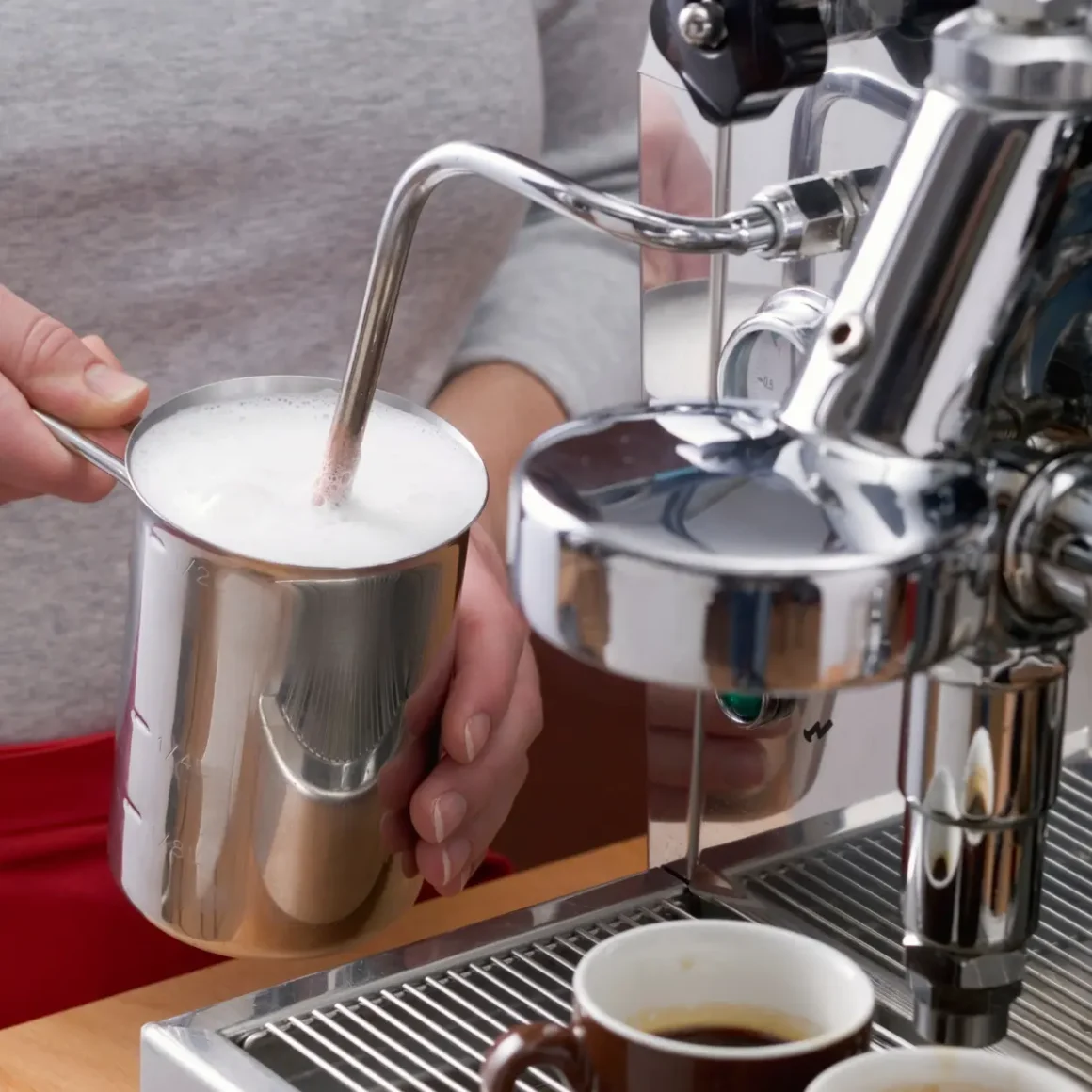
Froth plays a crucial role in coffee, particularly in the unique preparation of the dry variation, where it defines the drink’s character and taste.
- Defining Characteristic: In a dry cappuccino, the froth is not just an add-on; it’s the defining feature. The froth in this variant is thicker and more voluminous compared to traditional cappuccinos.
- Texture and Flavor Enhancement: The froth adds a creamy texture and a subtle sweetness, enhancing the overall sensory experience. It also acts as an insulator, keeping the coffee hot while gradually mixing with the espresso beneath.
- Visual Appeal: A well-frothed dry cappuccino is a visual delight, often served with artistic designs swirled into the froth, making it not just a beverage but a work of art.
Differentiating Dry Cappuccino from Other Varieties

To truly appreciate the uniqueness of this lovely beverage, it’s essential to understand how it differs from other coffee varieties.
- Less Milk, More Foam: The key distinction between a dry cappuccino and other variations, such as the bone dry cappuccino, also known as extra dry cappuccino, lies in the milk-to-foam ratio. A ‘dry’ version contains a minimal amount of steamed milk and a substantial amount of foam, whereas the extra dry version excludes steamed milk entirely.
- Richer Espresso Flavor: In a bone dry cappuccino, the absence of steamed milk enables the robust flavors of the espresso to take center stage, appealing to coffee enthusiasts who favor a more pronounced coffee taste.
Dry Cappuccino vs Wet Cappuccino

Understanding the difference between a dry and a wet cappuccino is key to appreciating their distinct qualities.
- Froth-to-Milk Ratio: The core difference in wet vs dry cappuccino lies in the froth-to-milk ratio. A wet cappuccino has more steamed milk and less froth, leading to a creamier and less intense coffee flavor. (2)
- Texture and Taste: A wet cappuccino is smoother and milkier, whereas the dry variant offers a frothier, bolder taste due to its higher foam content and reduced milk.
Common Misconceptions About Frothy Coffees

Dispelling common myths about frothy coffees is essential to understanding their true nature and appeal.
- Frothiness Equals Strength: One common misconception is equating frothiness with the strength of the coffee. In reality, the strength is determined more by the espresso than the froth.
- All Frothy Coffees Are the Same: People often mistake all frothy coffees for being similar. However, variations like the bone dry cappuccino, which has no steamed milk at all, only foam, offer distinct textures and flavors.
- Froth Is Just Aesthetic: While froth certainly adds visual appeal, its role in enhancing the texture and taste of the coffee is significant, especially in ‘dry’ varieties.
Understanding the delicate art of froth in coffee preparation reveals the nuances that distinguish a simple cup of coffee from a truly exceptional experience. The froth in the ‘dry’ variation is not just a topping; it is an integral part of the drink’s identity, offering a unique texture and taste that sets it apart from other coffee varieties
Creating a Dry Cappuccino
Crafting a dry cappuccino, requires precision and care. This drink, known for its reduced milk and increased foam, delivers a robust espresso flavor, making it a favorite among coffee connoisseurs.
The Ingredients You Need
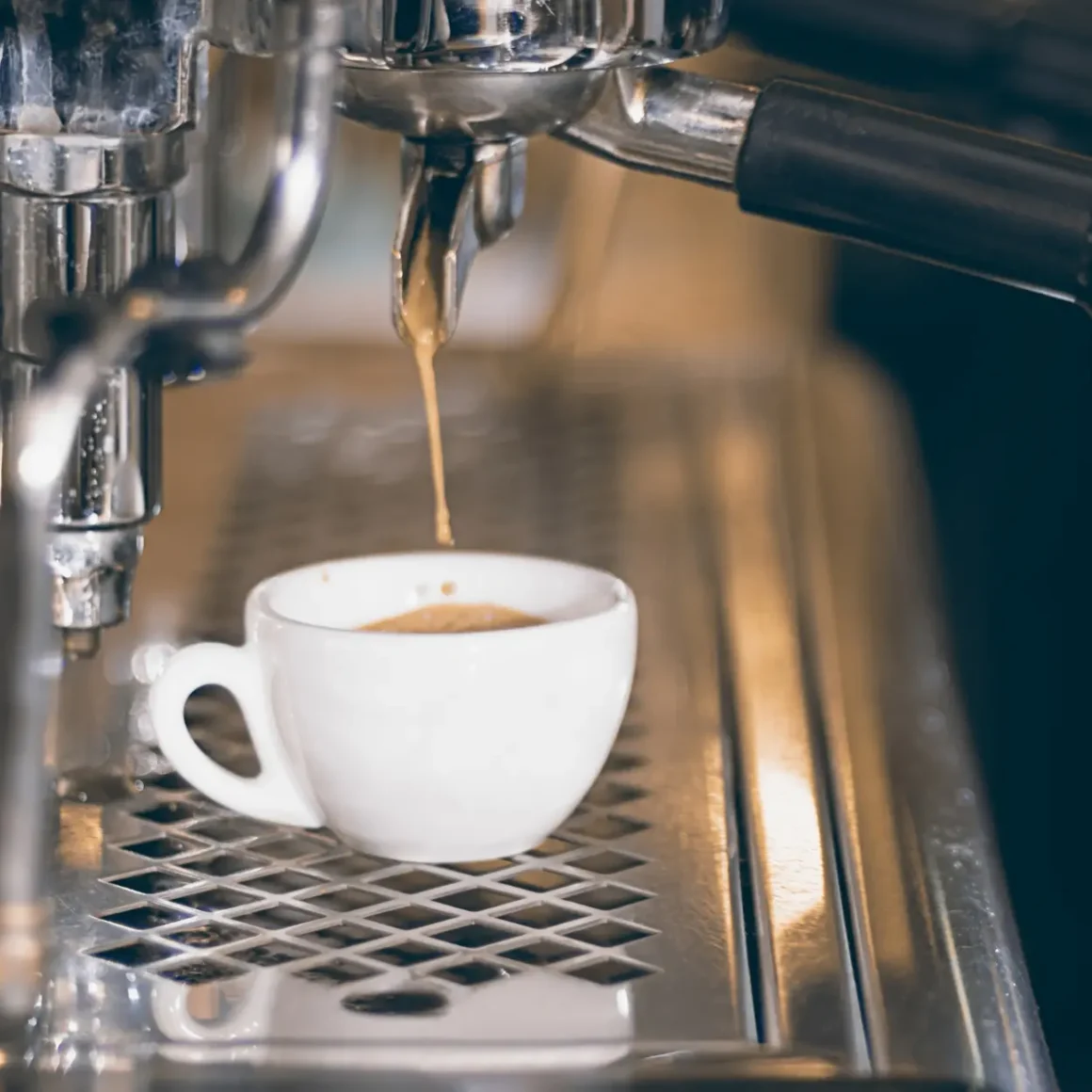
As previously discussed, to prepare this coffee drink, you will need a few key ingredients:
- Espresso: The heart of a cappuccino is a high-quality espresso. Make sure to use freshly ground coffee beans for a rich and aromatic shot.
- Milk: While less in quantity compared to a regular cafe cappuccino, the quality of milk is crucial. Whole milk is recommended for creating rich, stable foam.
- Water: Fresh, filtered water is essential for brewing the perfect espresso shot. (3)
Step-by-Step Preparation Guide
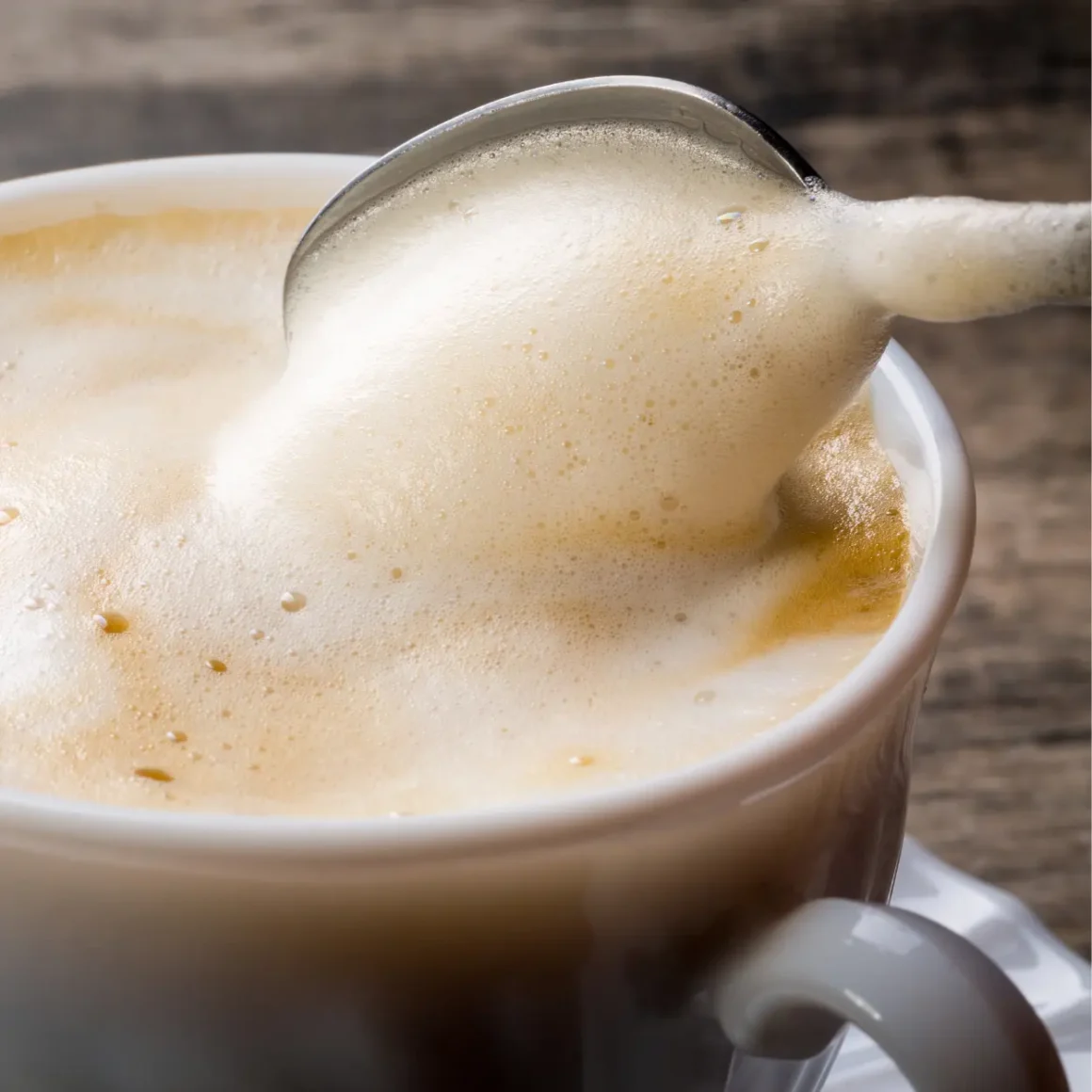
Creating a dry cappuccino at home can be a rewarding experience, especially when you follow these steps carefully for the best coffee results.
- Brew the Espresso: Start by brewing a single or double shot of espresso. For an authentic taste, use an espresso coffee machine.
- Froth the Milk: Heat the milk until it’s warm but not boiling. Using a milk frother or the steam wand of your espresso machine, froth the milk until it forms a thick, creamy foam. Remember, for this coffee drink, you want more foam and less liquid milk.
- Assemble the Drink: First, pour the espresso into a cappuccino cup. Then, gently spoon the frothed milk onto the espresso. The goal is to have a higher ratio of foam to liquid milk, creating the ‘dry’ effect.
- Serve Immediately: This delightful beverage should be served immediately to enjoy the contrast between the warm espresso and the cool, thick foam.
Tips for Achieving Coffee Perfection
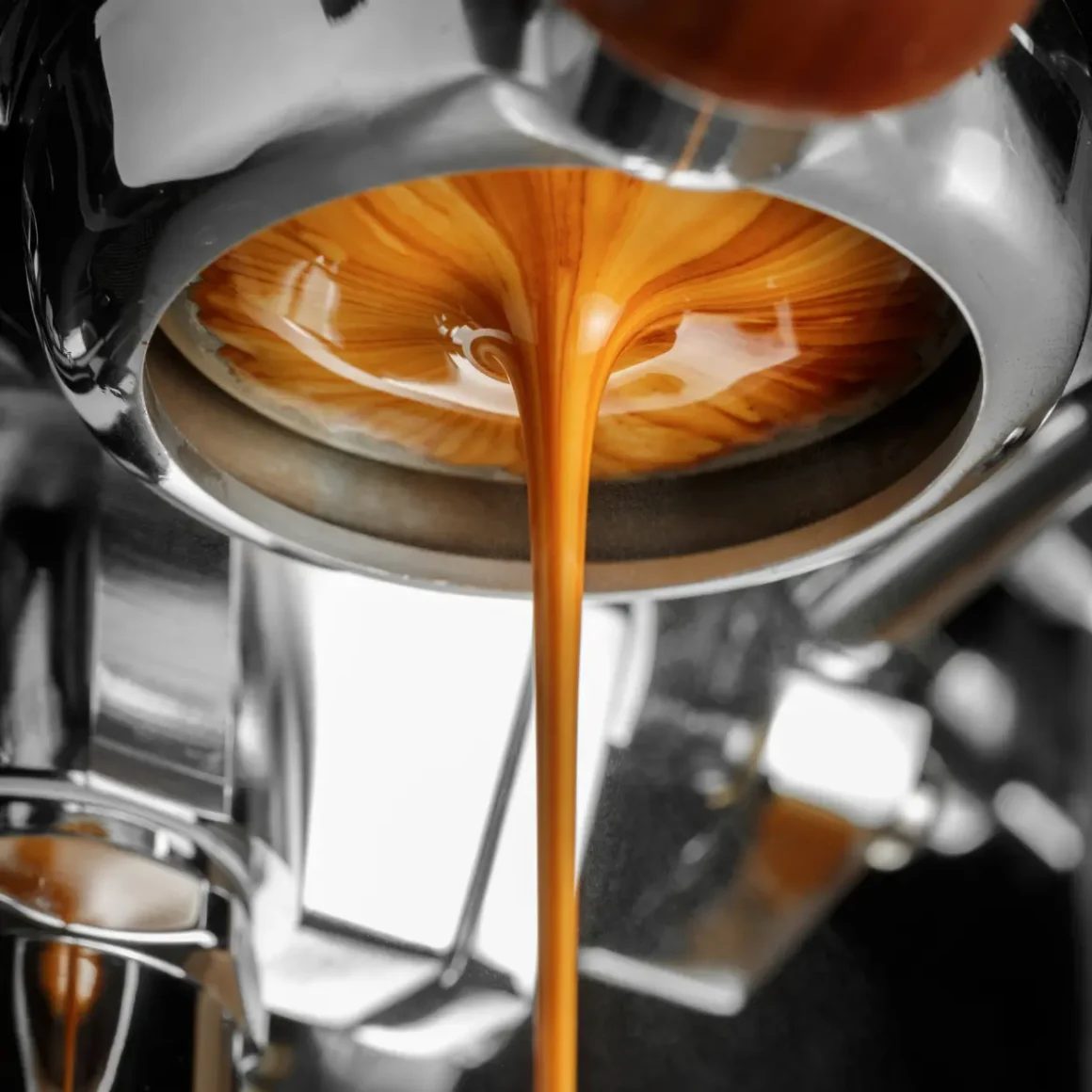
To elevate your dry cappuccino to coffee perfection, consider these tips as part of your brewing ritual.
- Quality of Espresso: The espresso quality can make or break your cappuccino. Invest in a good espresso coffee machine and learn the art of pulling a perfect espresso shot.
- Milk Frothing Technique: The froth is crucial in a dry cappuccino. Practice your frothing technique to achieve thick, creamy foam without large bubbles.
- Temperature Control: Pay attention to the temperature of both the espresso and the milk. Overheated milk won’t froth well, and a lukewarm espresso can ruin the overall experience.
- Clean Equipment: Always keep your espresso coffee machine and frother clean. Residue from previous uses can affect the taste of your coffee.
- Experiment and Personalize: Don’t be afraid to experiment with the ratios of espresso, milk, and foam to find your perfect balance.
By following these steps and tips, you can master the art of making a delicious dry cappuccino at home, bringing a touch of coffee shop excellence into your daily routine.
Dry Cappuccino vs. Traditional Cappuccino
In the diverse world of coffee, the distinction between a dry cappuccino and a traditional one is subtle yet significant, catering to different palates and preferences. Understanding these differences can enhance the coffee-drinking experience, whether you’re at a cafe or brewing at home.
Comparing Flavor Profiles

Flavor is a key aspect that distinguishes a dry variation from a traditional one, with each offering a unique coffee experience.
- Dry Cappuccino: Known for its bold espresso flavor, a ‘dry’ variation has less steamed milk, which allows the rich and robust taste of espresso to dominate. The minimal milk dilution results in a stronger coffee flavor, ideal for those who appreciate the pure taste of espresso.
- Traditional Cappuccino: This classic version maintains a harmonious balance between espresso, steamed milk, and foam. The milk in a traditional version softens the espresso’s intensity, creating a milder, creamier flavor that’s widely enjoyed.
Texture and Consistency Differences
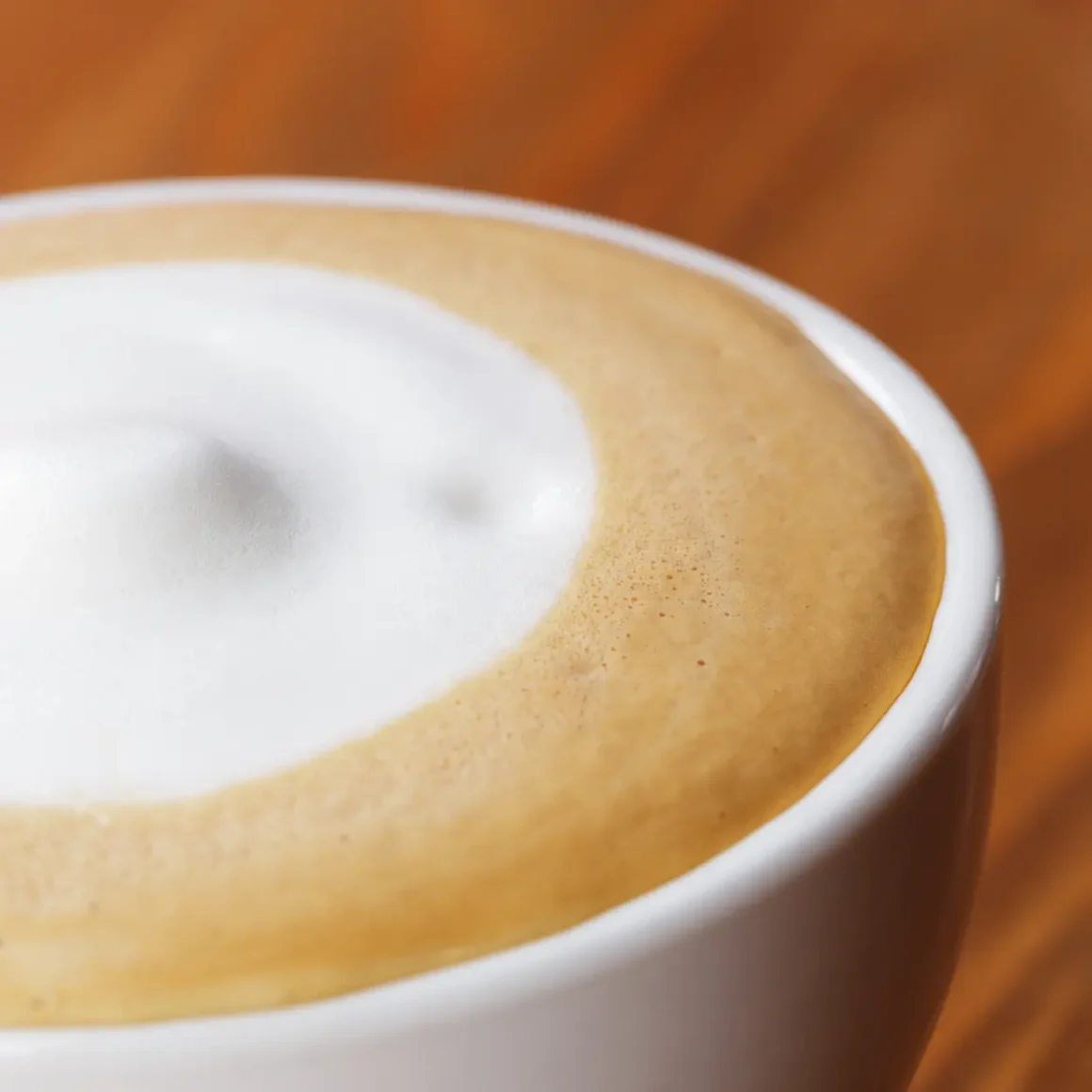
The texture and consistency of this delicacy play a significant role in defining its character and appeal.
- Dry Cappuccino Texture: Characterized by its thick layer of froth, this drink offers a unique mouthfeel. The increased foam volume compared to its traditional counterpart provides a light, airy texture.
- Traditional Cappuccino Consistency: In contrast, the traditional version has a creamier, velvety consistency due to the equal parts of steamed milk and foam. This combination creates a smooth and luxurious texture that blends perfectly with the espresso.
When to Choose Each Variety

Your choice between a dry and a traditional cappuccino can depend on your personal preference for flavor and texture.
- Choosing a Dry Cappuccino: Opt for a dry version when you desire a more pronounced espresso taste with less milk interference. It’s perfect for those who enjoy the depth and richness of coffee, along with a frothy texture.
- Opting for a Traditional Cappuccino: Select the traditional version if you prefer a balanced coffee experience with equal parts espresso, milk, and foam. It’s ideal for those who appreciate a creamy texture and a more subdued coffee flavor.
In summary, the choice between a dry and a traditional cappuccino comes down to personal preference in flavor intensity and texture. The dry variant offers a bolder espresso taste with a frothy feel, while the traditional one provides a creamy, balanced coffee experience. Understanding these differences can guide coffee lovers in choosing the perfect cup to suit their tastes.
Exploring Dry Cappuccino Variations
A dry cappuccino, serves as a fantastic canvas for creative and flavorful variations. These adaptations can range from adding unique flavors and toppings to experimenting with presentation styles and incorporating regional influences.
Adding Flavors and Toppings
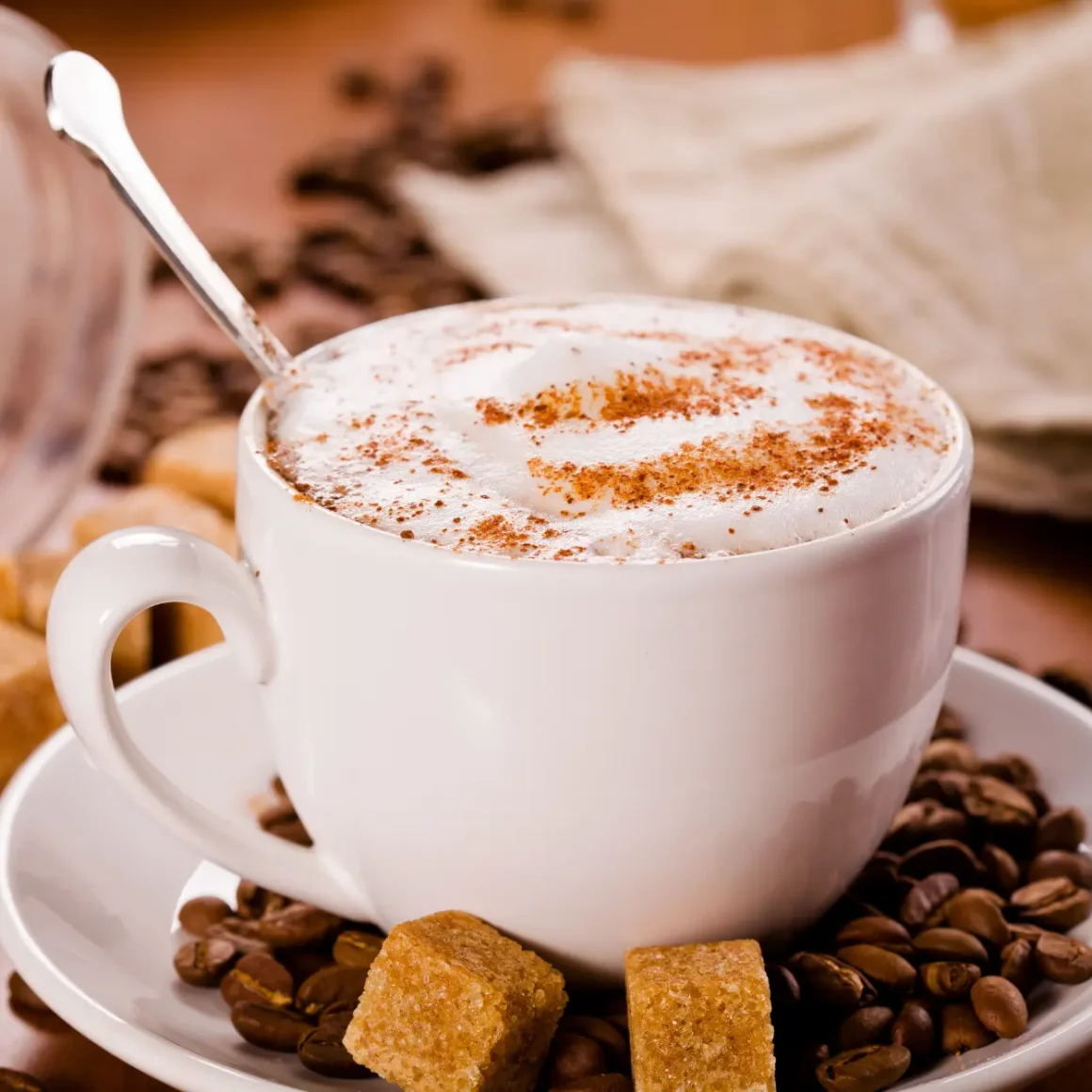
Enhancing this delectable concoction with various flavors and toppings can transform this classic drink into a personalized coffee experience.
- Syrups and Spices: Infuse your beverage with a variety of syrups such as vanilla, caramel, or hazelnut for a sweet twist. Spices like cinnamon or nutmeg can also add a warm, aromatic dimension.
- Chocolate or Cocoa Powder: A sprinkle of cocoa powder or a drizzle of chocolate syrup can transform your coffee drink into a delightful mocha experience.
- Whipped Cream: For an indulgent touch, top your dry cappuccino with a dollop of whipped cream. This adds a creamy texture and can balance the strong espresso flavor.
- Alternative kinds of milk: Experimenting with almond, soy, or oat milk can add a unique flavor profile and cater to different dietary preferences.
Creative Presentation Ideas

Creative presentation can elevate the enjoyment of your coffee drink, making each serving a special experience.
- Latte Art: Elevate the visual appeal of your dry cappuccino by mastering latte art techniques. Creating designs on the foam can make each cup a personalized piece of art.
- Glassware and Ceramics: Serve your cappuccino in a variety of cups or glasses to match the occasion or mood. Clear glasses can showcase the distinct layers of your drink.
- Garnishes: Garnish with a cinnamon stick, a slice of citrus, or a mint leaf for a touch of elegance and an added sensory experience.
Regional Twists on the Classic Dry Cappuccino

Different regions around the world have their unique takes on the classic cappuccino, incorporating local flavors and traditions.
- Italian Influence: In Italy, a cappuccino might be served with biscotti on the side, marrying the strong coffee flavor with a sweet, crunchy treat.
- Australia Variation: Flat white coffee is known for its velvety texture and strong coffee flavor, similar to the cappuccino but with a different milk-to-foam ratio.
- Asian Fusion: In some Asian countries, unique ingredients like matcha or yuzu might be incorporated for a refreshing twist on the traditional cappuccino.
Exploring the world of dry cappuccino variations opens up a realm of flavors, presentations, and cultural influences. Whether you’re adding a personal touch with flavors and toppings, experimenting with artistic presentation, or drawing inspiration from regional coffee practices, the possibilities are as endless as they are delightful.
Conclusion
In conclusion, exploring what is a dry cappuccino reveals much more than just a coffee beverage; it unveils a world of rich flavors, artistic presentation, and cultural diversity. This unique coffee variant, with its bold espresso taste and airy froth, offers a distinctive experience compared to traditional cappuccinos. The ability to personalize it with various flavors, toppings, and creative presentation styles adds to its appeal, making it a favorite among coffee aficionados. Additionally, the global twists on the classic cappuccino showcase its versatility and adaptability to different tastes around the world. Whether enjoyed in a cozy café or crafted at home, understanding and appreciating the nuances of this delectable coffee drink can significantly enhance your coffee experience.
FAQ
Can I make a dry cappuccino at home without an espresso coffee machine?
Yes, you can make a cappuccino dry at home using alternative methods like a stovetop espresso maker and a manual milk frother for the foam.
What are some popular dry cappuccino flavor combinations?
Popular flavor combinations include vanilla, caramel, or chocolate syrups, and spices like cinnamon or nutmeg for added aroma.
Is a dry cappuccino stronger in caffeine than other coffee drinks?
The caffeine content in a cappuccino dry is typically similar to other espresso-based drinks; the stronger flavor comes from less milk dilution, not more caffeine.
Why is the froth so important in a dry cappuccino?
The froth in a cappuccino dry is crucial as it gives the drink its characteristic light and airy texture, and enhances the espresso's robust flavor.



